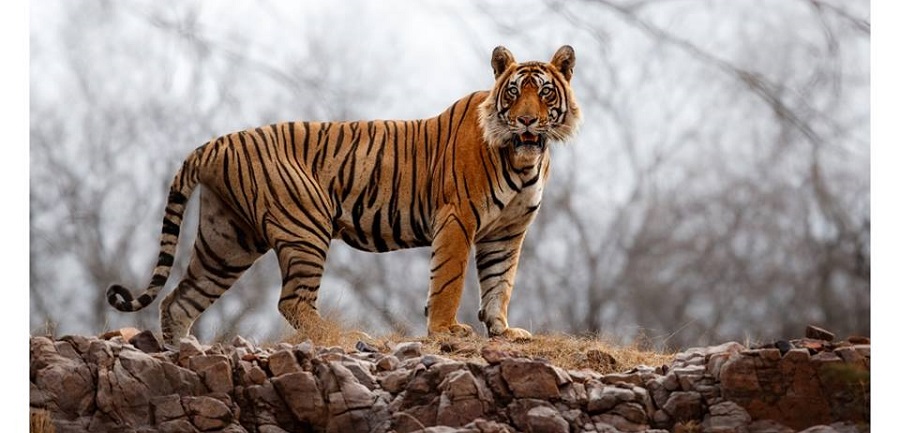With the advent of monsoon season, the mind wishes to wander somewhere beneath the clouds feeling the light droplets of rain. With the booming trend for monsoon getaways, the hill stations, especially the offbeat locations burgeons with tourists and traffic. Moreover, the risk of getting stranded up the hills due to natural calamities or other unforeseen circumstances is at its peak. Keeping an arm’s length from such unwanted challenges while enjoying a thrilling trip without any hassle is just the kind of relaxing escape for you. Given the situation, Ranthambore National Park is the best destination to cater to your desire.
Ranthambore National Park is one of India’s most renowned wildlife sanctuaries in Rajasthan, transforming into a verdant paradise during the monsoon season. While many might consider the dry winter months ideal for wildlife spotting, a monsoon visit to Ranthambore reveals a different, equally enchanting side of the park. The landscape is rejuvenated, wildlife thrives in the lush surroundings, and the park exudes a mystical charm that beckons nature enthusiasts and adventure seekers alike. Also, the fact that Ranthambore is entirely closed during during the rainy months is not true. Zones 6 to 10 continue with safari activities, while the same is halted in zones 1 to 5.
The monsoon breathes a magical spell into Ranthambore, turning its arid terrain into a lush green haven. The parched earth is carpeted with fresh grass, and the trees, draped in vibrant foliage, create a picturesque backdrop. Water bodies within the park brim with rainwater, attracting a plethora of birds and animals. The park, less crowded than during peak tourist season, offers a tranquil and immersive experience.
Wildlife Encounters
Contrary to popular belief, the monsoon is a great time for wildlife sightings in Ranthambore. The park is home to an impressive array of fauna, including tigers, leopards, sloth bears, and various species of deer. The big cats, especially tigers, are more active during the cooler monsoon months, and their frequent movements to water bodies enhance the chances of sightings. Birdwatchers are in for a treat, as the rains bring out a myriad of avian species. Migratory birds make their way to the park, joining the resident birds in creating a vibrant avian spectacle. Peacocks, Ranthambore’s ubiquitous residents, put on grand displays, their plumage glistening with raindrops, adding to the park’s allure.
Safari Experience
Embarking on a safari during the monsoon is an adventure in itself. The thrill of traversing muddy trails, the sound of raindrops on the jeep roof, and the fresh, earthy aroma create an unforgettable experience. While some parts of the park may be inaccessible due to water logging, the core areas remain open, offering ample opportunities for wildlife sightings.
Planning your safari in advance is crucial. Checking the Ranthambore online safari price and booking early ensures you secure a spot, as the limited number of safaris fill up quickly during the monsoon. The prices for safaris may vary depending on the type of vehicle chosen and the zone you wish to explore. It’s advisable to book through official channels to avoid any last-minute hassles.
The Bonus Rewards
• Ranthambore’s landscape undergoes a dramatic transformation with the advent of monsoon. The park’s lakes and waterholes, such as Padam Talao, Rajbagh Talao, and Malik Talao, brim with water, reflecting the surrounding greenery. The sight of a tiger strolling through this lush, rain-kissed environment is nothing short of magical.
• The ancient ruins scattered throughout the park, including Ranthambore Fort, add a touch of mystique to the landscape. These historical structures, draped in greenery, stand as silent witnesses to the park’s rich heritage. Exploring these ruins amidst the monsoon showers offers a unique blend of history and nature.
• Ranthambore is not just about wildlife; it also offers a glimpse into the local culture and cuisine. The local cuisine, rich in flavors and spices, is a must-try. Dishes like Laal Maas (spicy mutton curry), Dal Baati Churma (a traditional Rajasthani meal), and Gatte Ki Sabzi (gram flour dumplings in a spicy gravy) offer a taste of the region’s culinary heritage. Many lodges and resorts incorporate these dishes into their menus, providing an authentic dining experience.
